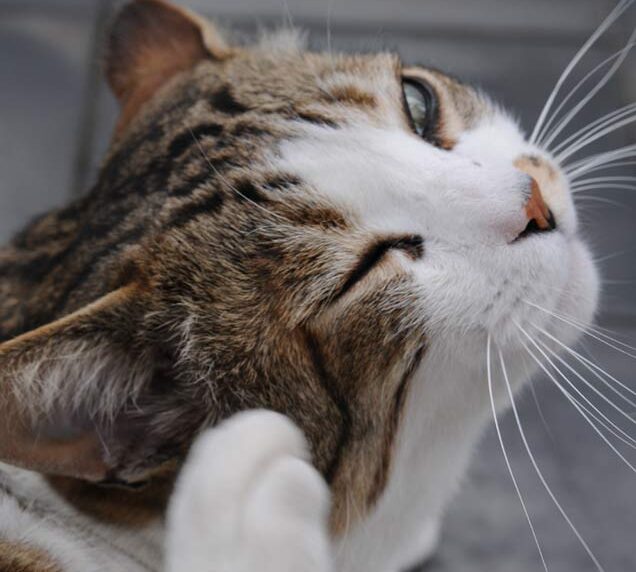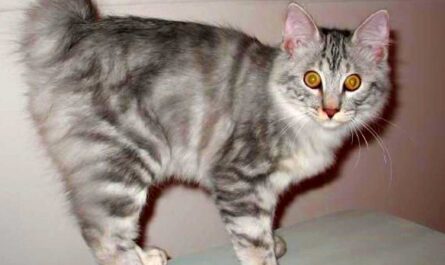Imagine your furry friend, usually a picture of playful energy, suddenly becoming withdrawn and lethargic. They might develop a runny nose, lose their appetite, and even have painful mouth sores. This mysterious illness, with its combination of unusual symptoms, could be caused by a tiny foe – the calicivirus (FCV) in cats.
This article delves deep into the world of FCV infection in cats. We’ll explore everything you need to know, from the sneaky ways this virus invades feline bodies to the diverse symptoms it can cause. We’ll also discuss potential complications, treatment options, and most importantly, how to prevent your precious kitty from catching it in the first place.
FCV exists in various strains, some causing mild sniffles while others can lead to more serious illnesses. By understanding the spectrum of symptoms and the importance of early diagnosis and management, you can ensure your cat receives the best possible care if they encounter this feline foe.
Unveiling the Foe: Understanding Feline Calicivirus (FCV)
A Viral Culprit: Microscopic Invaders
Before we dive into the specifics of FCV, let’s take a step back to understand viruses in general. Viruses are microscopic particles much smaller than bacteria. Unlike bacteria, which are single-celled organisms, viruses can’t survive on their own. They need to invade the cells of a host, like a cat, to multiply and cause illness.
Meet FCV: A Spectrum of Severity
Feline calicivirus is a highly contagious virus that specifically targets cats. It comes in various strains, each with the potential to cause a range of symptoms. Some strains might only lead to a mild upper respiratory infection, similar to the common cold in humans. However, other strains can be more severe, affecting not just the respiratory system but also the mouth, eyes, joints, and even the internal organs.
Think of these strains like mischievous pranksters – some might just leave a whoopee cushion on your chair, while others might cause a full-blown water balloon fight! The severity of the symptoms your cat experiences depends on the specific strain of FCV they encounter and their overall health.
Transmission Pathways: Sharing is Not Always Caring
FCV is a highly contagious virus that can spread easily between cats. The primary routes of transmission include:
- Direct Contact: A sneeze, a friendly groom, or even sharing a food bowl – any close contact with an infected cat can transfer the virus.
- Aerosols: When an infected cat sneezes or coughs, they release tiny respiratory droplets containing the virus into the air. These droplets can be inhaled by other cats nearby.
- Contaminated Objects: The virus can linger on surfaces like food bowls, bedding, or toys for a short period. If a healthy cat comes into contact with these contaminated objects, they can become infected.
It’s important to note that FCV is not transmissible to humans or other animals. So, you can cuddle your cat and shower them with affection without worry.
Beyond Sneezes: A Multi-System Threat
While FCV is often associated with respiratory problems like sneezing, runny nose, and congestion, it can also affect other parts of your cat’s body. Here are some additional symptoms to watch out for:
- Mouth ulcers: These painful sores can make it difficult for your cat to eat and drink.
- Conjunctivitis: Inflammation of the eyes, causing redness, squinting, and discharge.
- Lameness: Joint pain and inflammation can make it uncomfortable for your cat to walk or jump.
- Fever: A general feeling of being unwell, with a higher-than-normal body temperature.
Remember, this is not an exhaustive list, and the specific symptoms your cat experiences will depend on the strain of FCV and their health. If you notice any of these signs in your feline friend, it’s crucial to consult your veterinarian for prompt diagnosis and treatment.
A Spectrum of Signs: Recognizing the Many Faces of FCV
Feline Calicivirus (FCV) can manifest in a variety of ways, making it a bit of a chameleon when it comes to symptoms. While some cats might experience a mild sniffle and be back to their playful selves in no time, others might develop more concerning signs. Here, we’ll explore the different ways FCV can show itself in our feline friends.
The Classic Cat Flu: A Familiar Foe
Just like humans can get the “common cold,” cats infected with FCV can exhibit symptoms that resemble the feline flu. These may include:
- Sneezing Storms: Frequent sneezing fits are a telltale sign of FCV. Imagine your cat letting out a series of tiny explosions, expelling dust and kitty irritants.
- Runny Nose Blues: A runny nose, sometimes with a clear or yellowish discharge, can accompany sneezing. Think of it as a kitty head cold, making them sniffle and wipe their nose (with a helpful paw, of course).
- Conjunctivitis Blues: Red, watery, or squinty eyes, similar to pink eye in humans, can also be a symptom of FCV. Imagine your cat looking a little teary-eyed and uncomfortable like they just shed a few tears over a missed birdwatching opportunity.
These signs are a good reason to schedule a visit with your veterinarian to get a proper diagnosis and ensure your feline friend receives the care they need.
Oral Ulcers and Beyond: More Than Just a Sniffle
In some cases, FCV can cause more serious problems than just a runny nose. These can include:
- Painful Mouth Ulcers: Feline Calicivirus can lead to the development of painful ulcers and lesions on the tongue, lips, and inside the mouth. Imagine your cat having tiny, sore spots in their mouth, making it uncomfortable for them to eat.
- Loss of Appetite: The discomfort caused by mouth ulcers can lead to a loss of appetite in some cats. This can be concerning, as cats need proper nutrition to stay healthy and fight off infection.
- Weight Loss: If a cat isn’t eating well due to mouth pain, they might start to lose weight. This is why early detection and treatment of FCV is important.
If you notice any of these signs in your cat, especially in conjunction with the cold-like symptoms, consult your veterinarian right away. They can provide pain relief and other supportive care to help your cat feel better and get back to enjoying their meals.
The Limping Enigma: An Unexpected Symptom
Here’s a surprising fact about FCV: in some cases, it can cause lameness and joint pain in cats. This symptom can be particularly puzzling because it doesn’t seem directly related to the respiratory or oral issues commonly associated with FCV. The exact reason for this limping is still being researched by veterinarians, but it’s important to be aware of it as a potential sign of FCV infection.
Varied Severity: A Spectrum of Illness
It’s important to remember that FCV infections can vary greatly in severity. Some cats might only experience mild, short-lived symptoms that clear up on their own. Others, however, might develop more serious complications like chronic mouth ulcers or joint pain. The severity of the infection can depend on factors like the specific strain of the virus, the cat’s overall health, and their age.
By familiarizing yourself with the different signs of FCV, you can be more observant of your cat’s health and seek veterinary attention promptly if you notice any concerning symptoms. Early diagnosis and treatment can significantly improve your cat’s comfort and recovery time.
Other Interesting Articles
- How to Tell if Your Cat is in Pain after Surgery: How to Help
- How to Tell If Your Cat Loves You The Most: 23 Signs
- 20 Tips On How to Comfort A Scared and Frightened Cat
- 26 Signs Your Cat Can’t Breathe: A Guide to Help It Recover
- Cat Trilling Sound: What Does It Mean, How To Handle
- Cat Chattering Sound: What Does It Mean, How To Deal With
- How to Take Care of A Kitten 2 Months Old: Tips, Guide
- How to Feed A Newborn Kitten That Won’t Eat: 19 FAQs
- How to Care for Your Cat After Spaying or Neutering
- Cat Excessive Yowling: Why Cats Yowling: What You Can Do?
- How to Regain A Cat’s Trust after Hitting It: 16 Tips to Apply
- How to Tell If My Cat is in Pain after Spaying: How to Help
- How to Help Cats Get Along with Dogs: 17 Beginner’s Tips
- Keep Your Kids and Cats Safe: 15 Effective & Simple Tips
- How to Feed A Newborn Kitten: 30 Essential Tips for Beginners
- Do Cats Have Emotions Like Humans, Dogs? 10 Ways to Feel
- Petting A Scared Cat: 15 FAQs to Comfort A Fearful Cat
- 18 Implied Messages Your Cat Is Sending You With Its Tail
- How to Help Cats Get Along with Each Other: 14 Useful Tips
- 7 Causes of Cat Aggression: Biting, Fighting, Attacking




